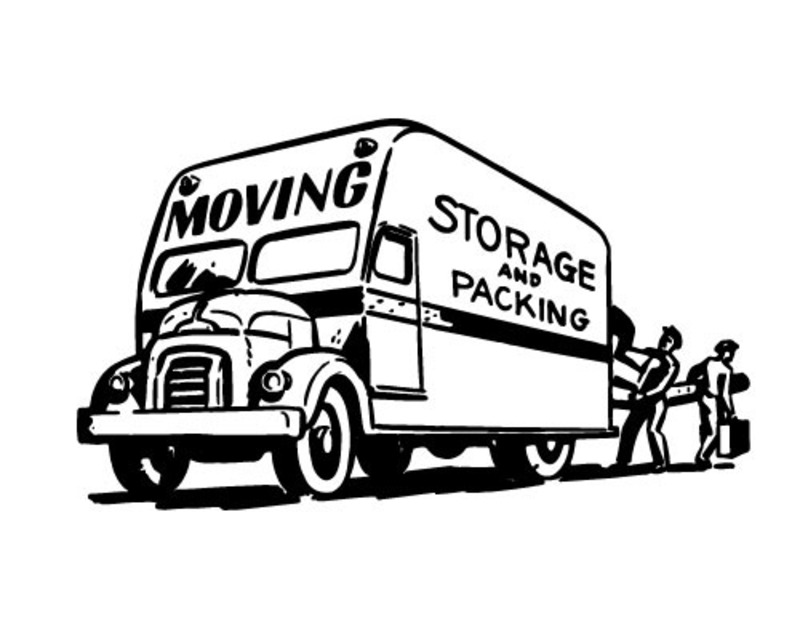Step-by-Step Guide to Packing Like a Pro for Moving House
Posted on 10/06/2025
Step-by-Step Guide to Packing Like a Pro for Moving House
Moving house is a major life event, often brimming with excitement and anxiety in equal measure. While the prospect of a new beginning is thrilling, the moving process can be stressful without a proper plan. One of the most crucial aspects of a smooth move is efficient and organized packing. Whether you're moving across town or relocating interstate, learning how to pack like a pro can save you time, money, and lots of unnecessary hassle. This comprehensive guide will take you through every step, so you can tackle your next house move with confidence and expertise!
Why Packing Properly Matters When Moving House
- Reduces damage: Correct packing techniques drastically minimize the risk of breakages.
- Saves time: Systematic packing helps during both moving and unpacking phases.
- Reduces stress: Knowing what's in each box makes your life much easier.
- Saves money: Organization ensures efficient use of space, potentially lowering removal costs.

Step 1: Start with a Packing Game Plan
Before wrapping a single dish or filling any boxes, create a thorough moving house packing plan. This sets the foundation for a streamlined process and ensures nothing gets overlooked.
Create a Moving Checklist
- List everything that needs to be packed room by room.
- Include deadlines and milestones.
- Assign tasks to family members or roommates as needed.
Declutter Before You Pack
Now is the perfect opportunity to evaluate your belongings. The less you have, the easier (and cheaper) your move. Sort items into four categories: Keep, Donate, Sell, and Discard. Hosting a pre-move garage sale or selling unwanted items online can also help offset moving costs.
Step 2: Gather the Right Packing Supplies
Having the right packing materials is the secret weapon to packing like a pro for moving. Here's a checklist of essential supplies:
- Sturdy moving boxes in various sizes
- Bubble wrap and packing paper for cushioning
- Packing tape (lots of it!)
- Scissors and box cutters
- Permanent Markers for labeling
- Stretch wrap and furniture blankets
- Specialty boxes for wardrobe, dishes, TVs, and mirrors
- Ziplock bags for screws, bolts, and small parts
- Colored labels or stickers for color-coding (optional, but highly effective)
Step 3: Start Early With Non-Essentials
Packing isn't a job for the night before your move. Begin at least 3-4 weeks in advance, starting with items you won't need until after you settle into your new home. This includes:
- Off-season clothing and shoes
- Rarely used kitchen gadgets or bakeware
- Books, DVDs, and decorations
- Extra linens and towels
- Sports equipment and hobby supplies
Step 4: Room-By-Room Packing Tips
To pack for moving house like a professional, tackle one room at a time. This reduces overwhelm and keeps everything organized.
Packing the Kitchen
- Use cell kits or dish-pack boxes to safeguard fragile items.
- Wrap all glassware in bubble wrap or packing paper.
- Label boxes as "FRAGILE".
- Empty and defrost the refrigerator 24-48 hours before moving day.
- Pack appliances in their original boxes, if available, or add extra cushioning.
- Place heavier items like pots and pans at the bottom of boxes.
Living Room & Bedrooms
- Disassemble furniture when possible; keep screws and bolts in labeled Ziplock bags taped to the item.
- Wardrobe boxes are ideal for clothing on hangers.
- Wrap electronics in anti-static bubble wrap, and group remotes and cables in labeled bags.
- Use blankets to wrap artwork and mirrors.
Bathroom
- Seal spillable liquids in plastic bags.
- Pack towels and soft items in bags or use them as cushioning elsewhere.
- Properly dispose of expired meds and toiletries.
Garage & Outdoor Items
- Drain fuel from power tools and lawn equipment.
- Wrap sharp tools in towels and secure with tape or zip ties.
- Bundle long tools like rakes and shovels together.
Step 5: Master the Art of Box Packing
Best Practices for Efficient Packing
- Don't overload boxes. Heavy boxes are hard to carry and more likely to break. Aim for a max of 15-20kg per box.
- Heavier items go on the bottom, lighter items on top.
- Fill empty spaces with towels, socks, or crushed paper to avoid shifting.
- Seal boxes securely with high-quality tape on both the top and bottom seams.
- Label each box with its contents and destination room. For extra organization, number each box and keep a master inventory list.
- Consider using colored labels or tape to quickly identify boxes for each room in your new home.
Step 6: Label Like a Professional
Effective labeling is a game-changer when moving house. Not only does it help movers know where to place each box, but it also makes unpacking infinitely easier.
- Be specific - instead of "Kitchen", write "Kitchen: Pots and Pans".
- Highlight fragile items and note if a box should be opened first.
- Color-code for extra efficiency -- assign a color to each room and mark boxes accordingly.
- Number boxes and keep a digital or written inventory to track your belongings.
Step 7: Prepare an Essentials Box
Nothing is worse than arriving at your new home and not being able to find your toothbrush or the coffee pot. The night before you move, pack an essentials box or "first night" kit. Include:
- Toiletries and medications
- Chargers and important electronics
- Snacks and water bottles
- A change of clothes
- Basic kitchenware (coffee maker, mugs, utensils)
- Bedding and towels
- Important documents and valuables
- Children's or pets' favorite items
Step 8: Special Considerations for Valuables and Documents
Items like passports, birth certificates, jewelry, and sentimental heirlooms should never be packed with general household goods. Either carry them with you or use a lockable box that stays by your side throughout the move.
Step 9: Protect Your Belongings Like a Pro
- Use plenty of bubble wrap for delicate items.
- Wrap furniture in stretch wrap and moving blankets to prevent dings and scratches.
- Stack boxes of similar size and weight.
- Do not place anything heavy on top of fragile boxes.
- Keep pets and children away during the loading process for safety and efficiency.
Bonus Packing Tips for Moving House
- Photograph complex electronic setups before unplugging wires.
- Keep nuts, bolts, and hardware for furniture in labeled bags and tape them to the relevant item.
- Pack valuables and documents in a clearly labeled, separate box to go with you.
- Use suitcases for heavy books or shoes.
- If possible, enlist friends to help or consider hiring professional packers for extra-large moves.
- Stay hydrated and take regular breaks to avoid burnout.
Packing Do's and Don'ts
Do's:
- Start early - give yourself plenty of time.
- Use strong, quality materials for packing.
- Edit ruthlessly - don't move things you don't need!
- Ask for help when needed.
- Label everything - you'll thank yourself later.
Don'ts:
- Don't leave any empty spaces in boxes, as this increases movement and potential breakage.
- Don't wait until the last minute to start packing.
- Don't pack hazardous or prohibited items with your regular goods.
- Don't make boxes too heavy--always prioritize safety!
- Don't forget to take extra care with sentimental or irreplaceable items.
How Professional Movers Can Help with Packing
If this all feels overwhelming, consider hiring a professional packing and moving service. These experts use proven methods, quality materials, and can quickly and carefully pack everything from dishes to delicate antiques. If you're on a tight schedule or have specialty items, their expertise can be invaluable.

Final Packing Checklist Before Moving Day
- All boxes are packed, labeled, and sealed.
- Furniture is disassembled and wrapped.
- Essentials box is prepped and set aside.
- Valuables and important documents are with you.
- Electronics are disconnected and cords secured.
- Appliances are emptied and cleaned.
- Old house is cleaned and ready for handover.
- Inventory checklist is complete for reference at arrival.
Conclusion: Packing for Your Home Move Like a Pro
Preparing for a move doesn't have to be stressful or chaotic. By following this step-by-step guide to packing for moving house, you can ensure your treasured belongings arrive safely and that unpacking is organized and efficient. Remember, planning ahead, securing great supplies, and maintaining a system are your biggest allies. Whether you do it all yourself or bring in expert packers, packing like a pro when moving house is the key to transitioning smoothly into your new space. Happy moving!





